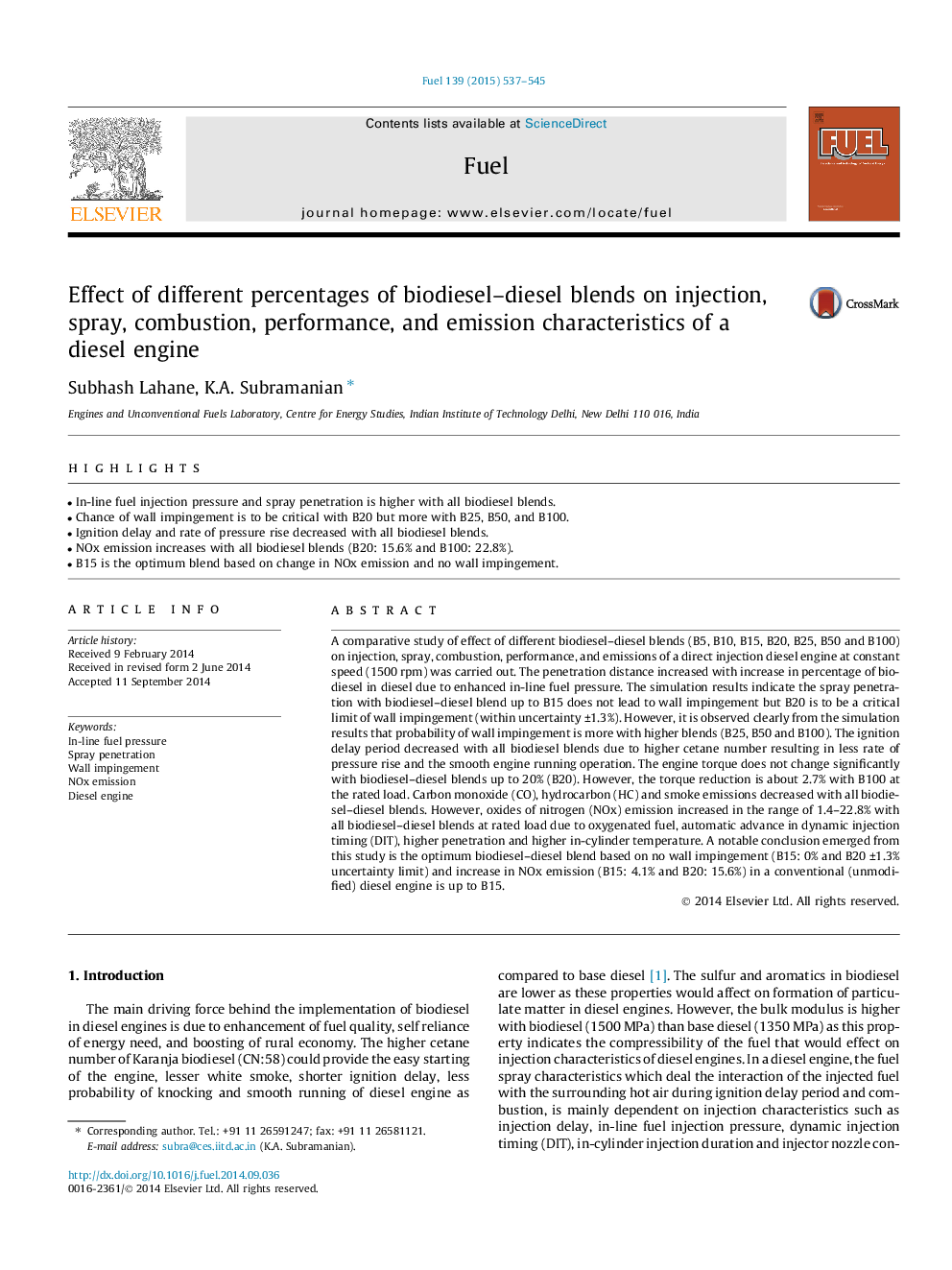| Article ID | Journal | Published Year | Pages | File Type |
|---|---|---|---|---|
| 6636557 | Fuel | 2015 | 9 Pages |
Abstract
A comparative study of effect of different biodiesel-diesel blends (B5, B10, B15, B20, B25, B50 and B100) on injection, spray, combustion, performance, and emissions of a direct injection diesel engine at constant speed (1500 rpm) was carried out. The penetration distance increased with increase in percentage of biodiesel in diesel due to enhanced in-line fuel pressure. The simulation results indicate the spray penetration with biodiesel-diesel blend up to B15 does not lead to wall impingement but B20 is to be a critical limit of wall impingement (within uncertainty ±1.3%). However, it is observed clearly from the simulation results that probability of wall impingement is more with higher blends (B25, B50 and B100). The ignition delay period decreased with all biodiesel blends due to higher cetane number resulting in less rate of pressure rise and the smooth engine running operation. The engine torque does not change significantly with biodiesel-diesel blends up to 20% (B20). However, the torque reduction is about 2.7% with B100 at the rated load. Carbon monoxide (CO), hydrocarbon (HC) and smoke emissions decreased with all biodiesel-diesel blends. However, oxides of nitrogen (NOx) emission increased in the range of 1.4-22.8% with all biodiesel-diesel blends at rated load due to oxygenated fuel, automatic advance in dynamic injection timing (DIT), higher penetration and higher in-cylinder temperature. A notable conclusion emerged from this study is the optimum biodiesel-diesel blend based on no wall impingement (B15: 0% and B20 ±1.3% uncertainty limit) and increase in NOx emission (B15: 4.1% and B20: 15.6%) in a conventional (unmodified) diesel engine is up to B15.
Related Topics
Physical Sciences and Engineering
Chemical Engineering
Chemical Engineering (General)
Authors
Subhash Lahane, K.A. Subramanian,
